Biol 300 Class 2.2: DNA Origins and Replicons (Part 1)
1/38
There's no tags or description
Looks like no tags are added yet.
Name | Mastery | Learn | Test | Matching | Spaced |
|---|
No study sessions yet.
39 Terms
What is a Replicon?
A unit of the genome that is replicated, it contains an origin

What is an Origin?
A sequence of DNA where replication is initiated, it is usually initiated bidirectionally.
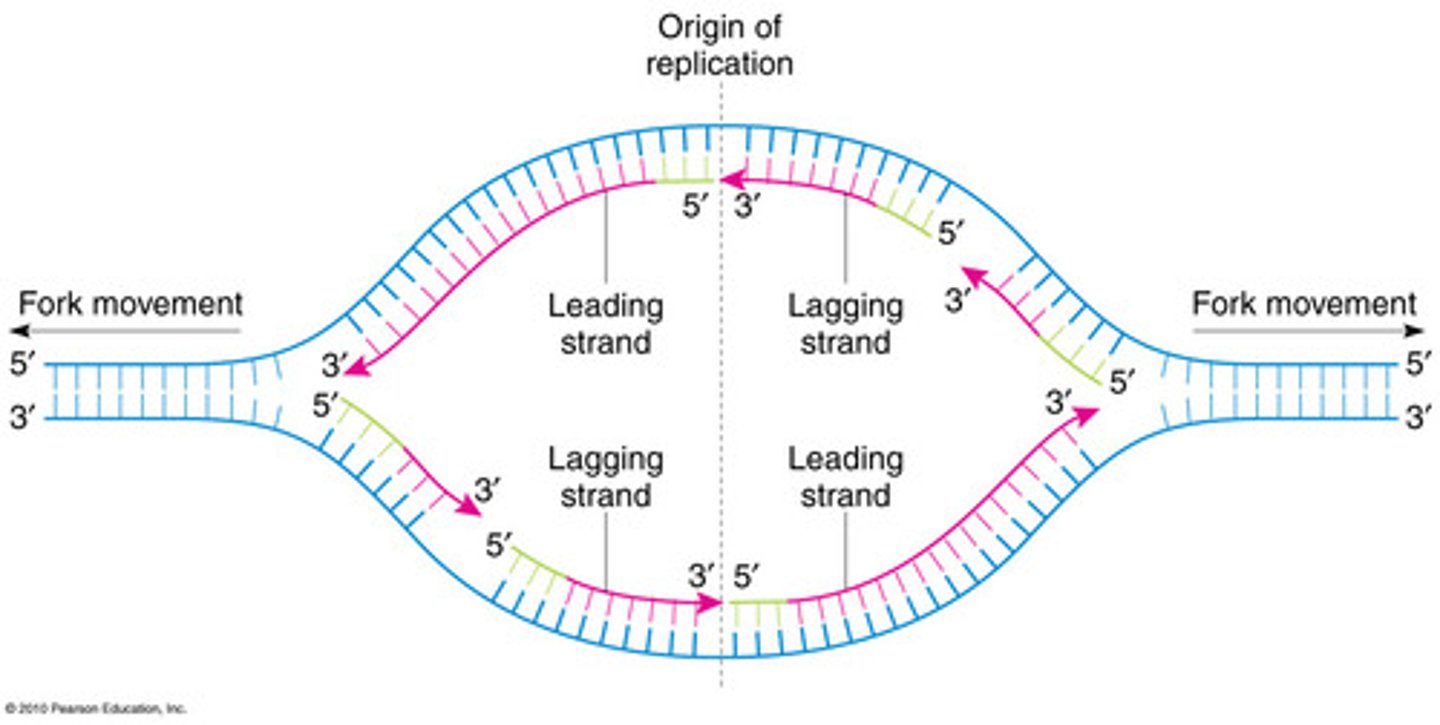
What is a terminus?
a segment of DNA at which replication ends
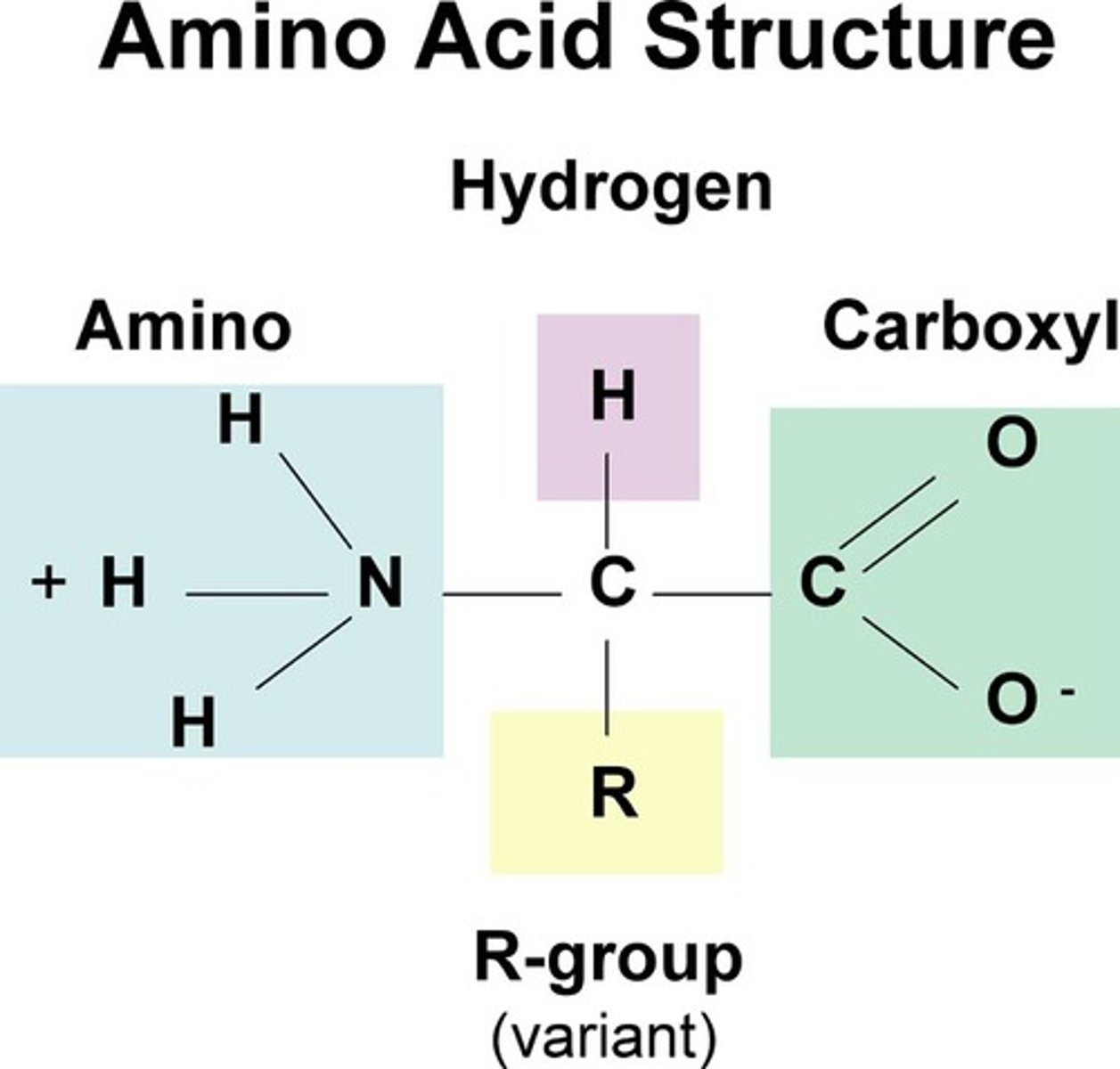
What is a replication fork?
Points at which parental strands of DNA are separated so that replication can proceed.
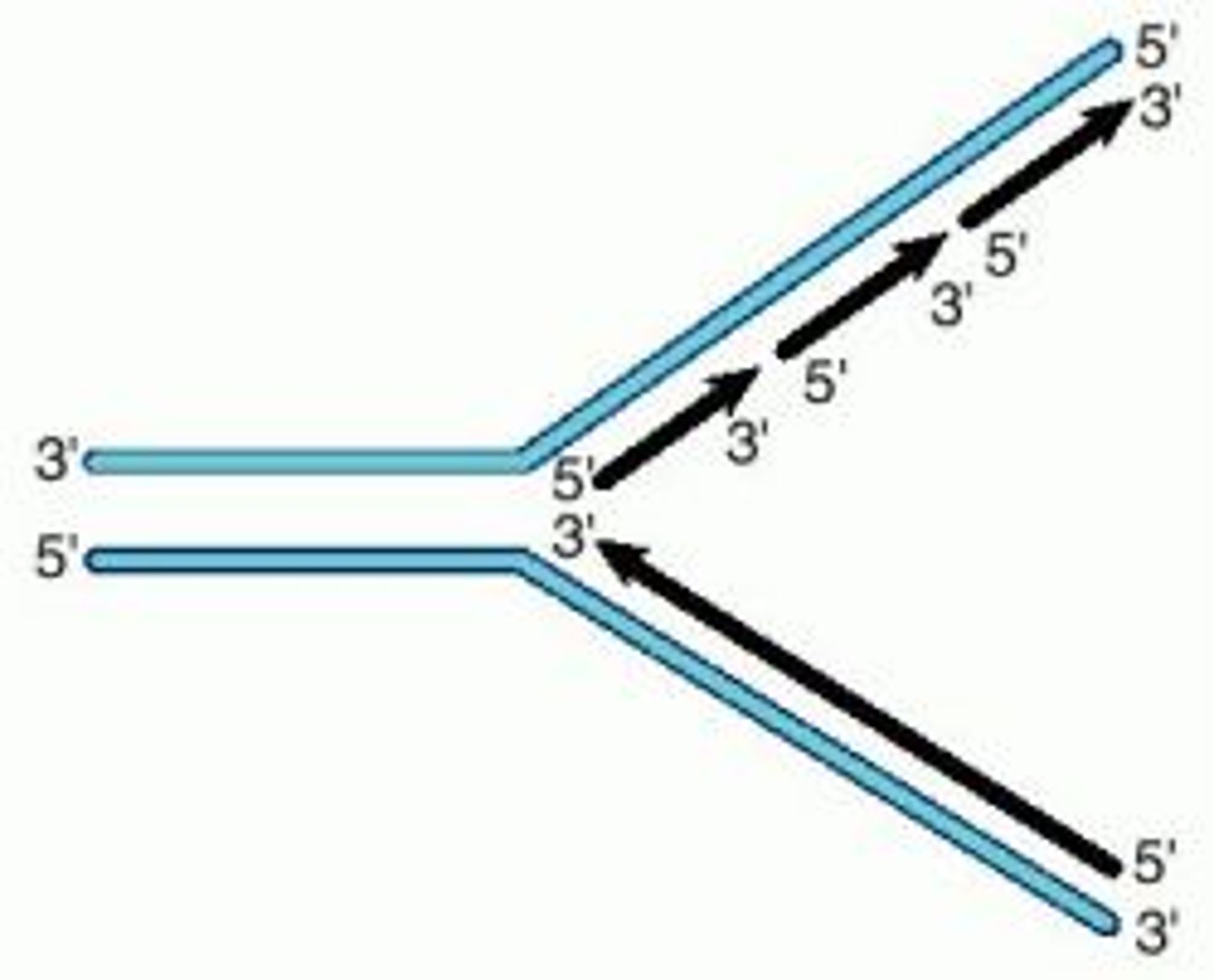
What is a Unidirectional Replication Fork?
Only 1 replication fork is created at the origin
What is a Bidirectional Replication fork?
2 replication forks are created from an origin both moving at opposite ends. This is the most common form
What are the types of Replicons found in Prokaryotic Genomes?
1. Single Copy Replicons: Only 1 copy per bacterium
2. Multi Copy Replicons: More than one copy

What are the types of replicons found in Eukaryotic Systems?
1. Nuclear Chromosomes: A Large number of replicons are distributed along chromosomes; several origins
2. Mitochondrial/Chloroplast: Replicate similarly to Multi-Copy replicons

What are Theta Structures?
These are the meeting points for 2 replication forks
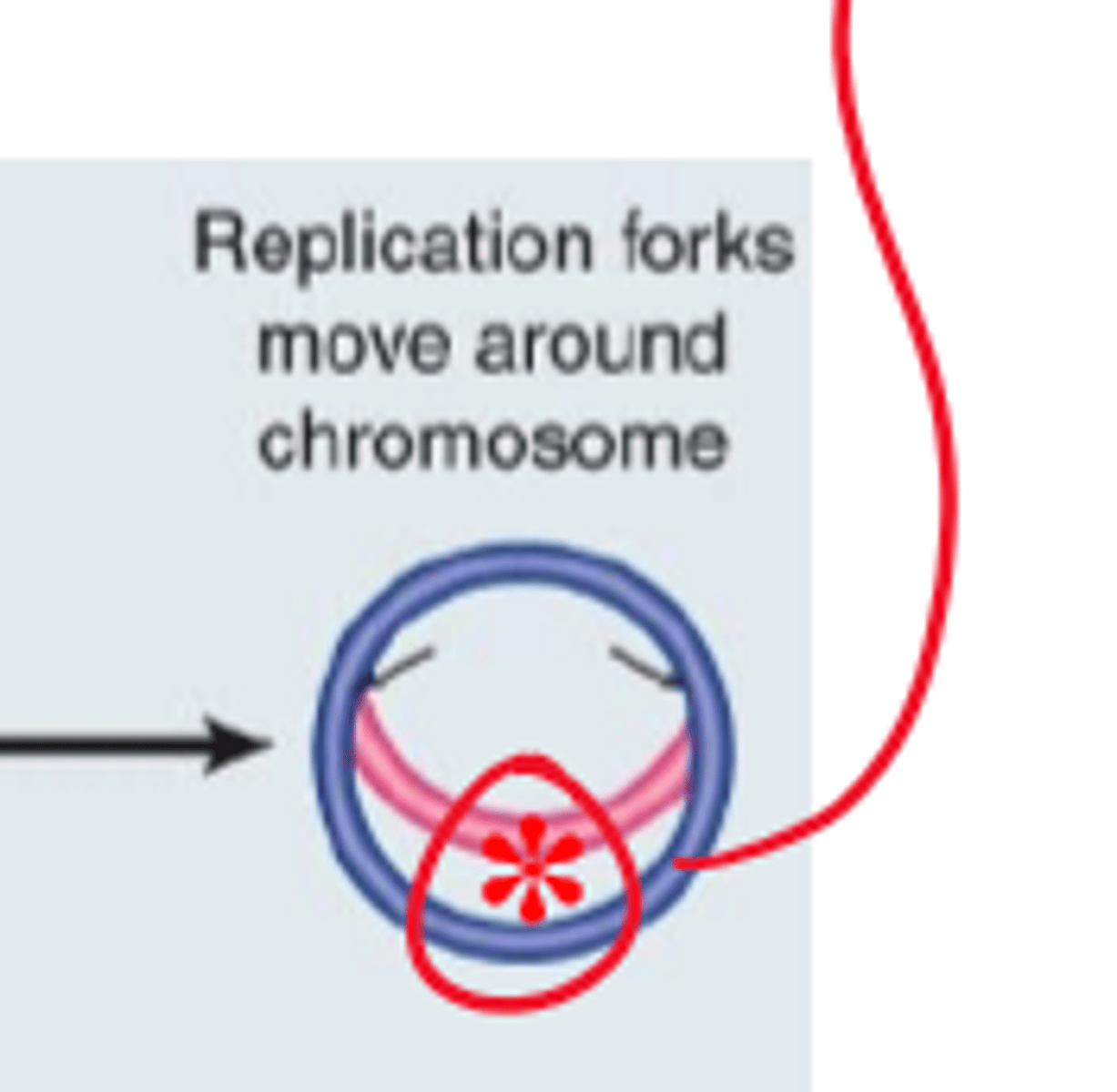
What are the three steps of E. Coli replication discussed?
1. Starts at oriC region
2. Terminate past each other at terminator sequences
3. Produces interlocking circles that must be resolved.
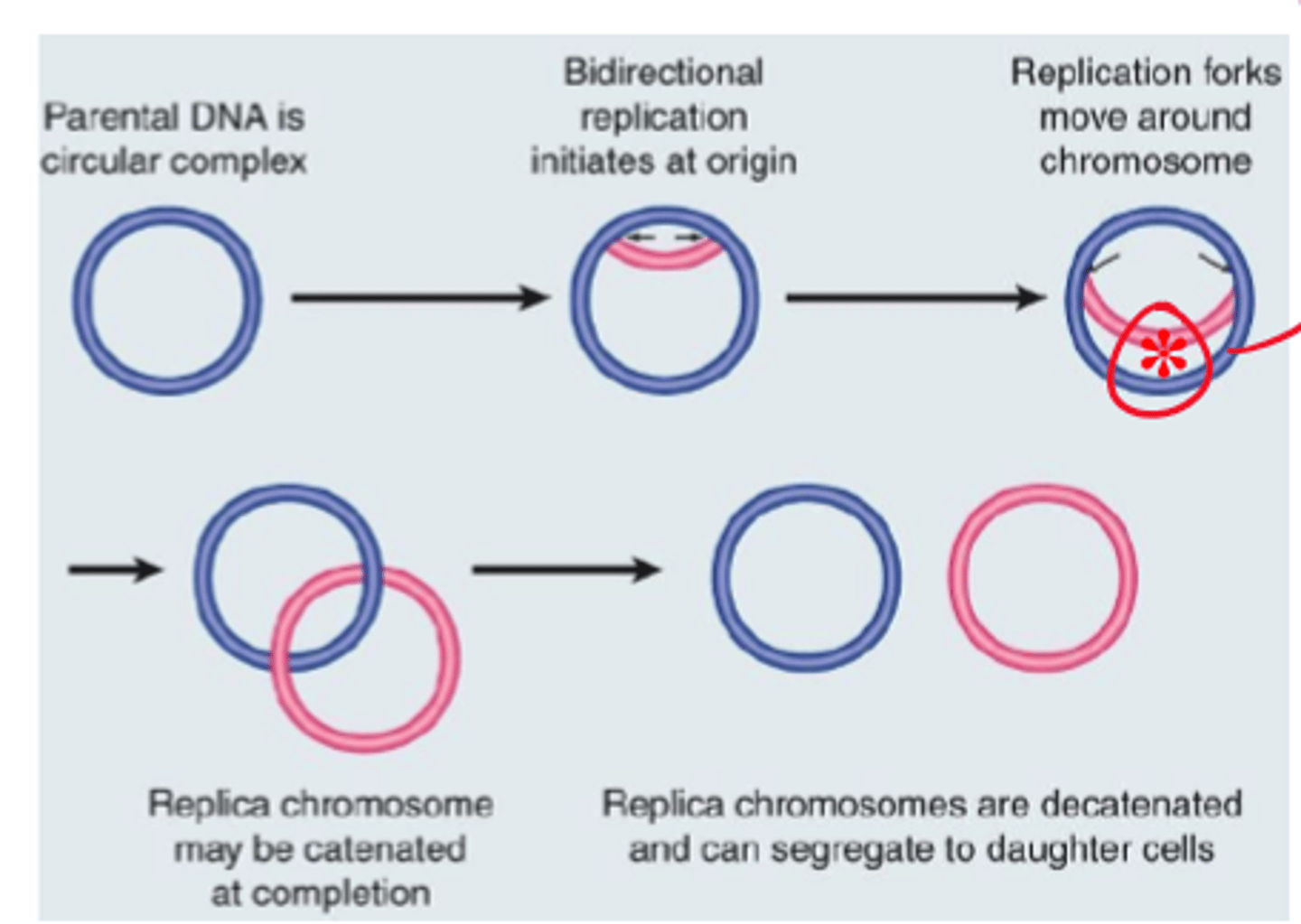
How is replication of bacterial DNA regulated?
Methylation of bacterial origins regulates replication initiation.
What is the enzyme responsible for fully methylating Inactive Origins in bacteria? Where does it Methylate?
Dam Methylase, it methylates GATC regions of the DNA
What is the difference between Hemi methylated and Fully methylated oriC?
Hemi-methylated oriC cannot initiate replication while Fully Methylated oriC can start replication
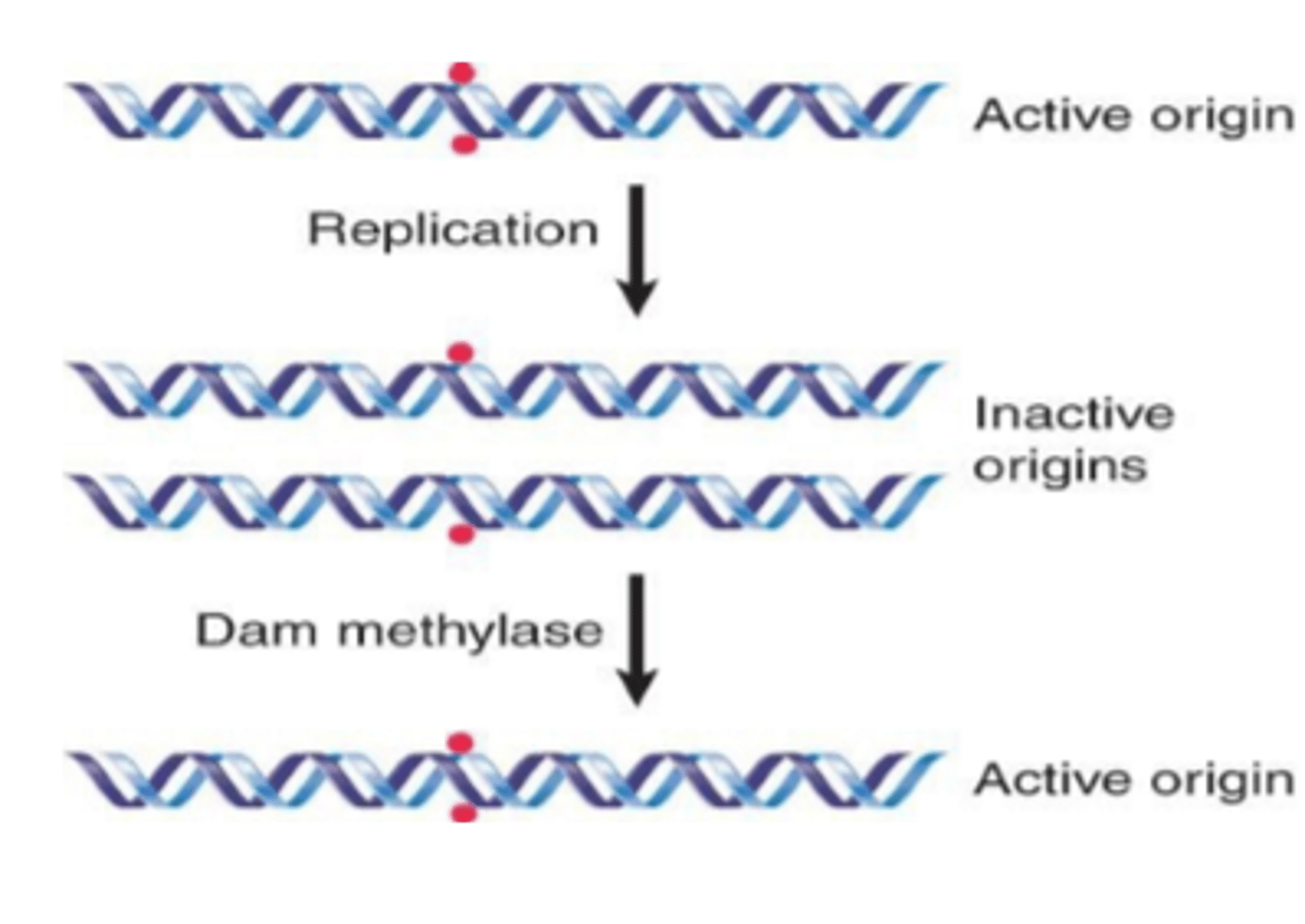
What must first occur for replication of bacterial DNA to occur
The oriC must first be fully methylated with Dam methylase in order for replication to occur.
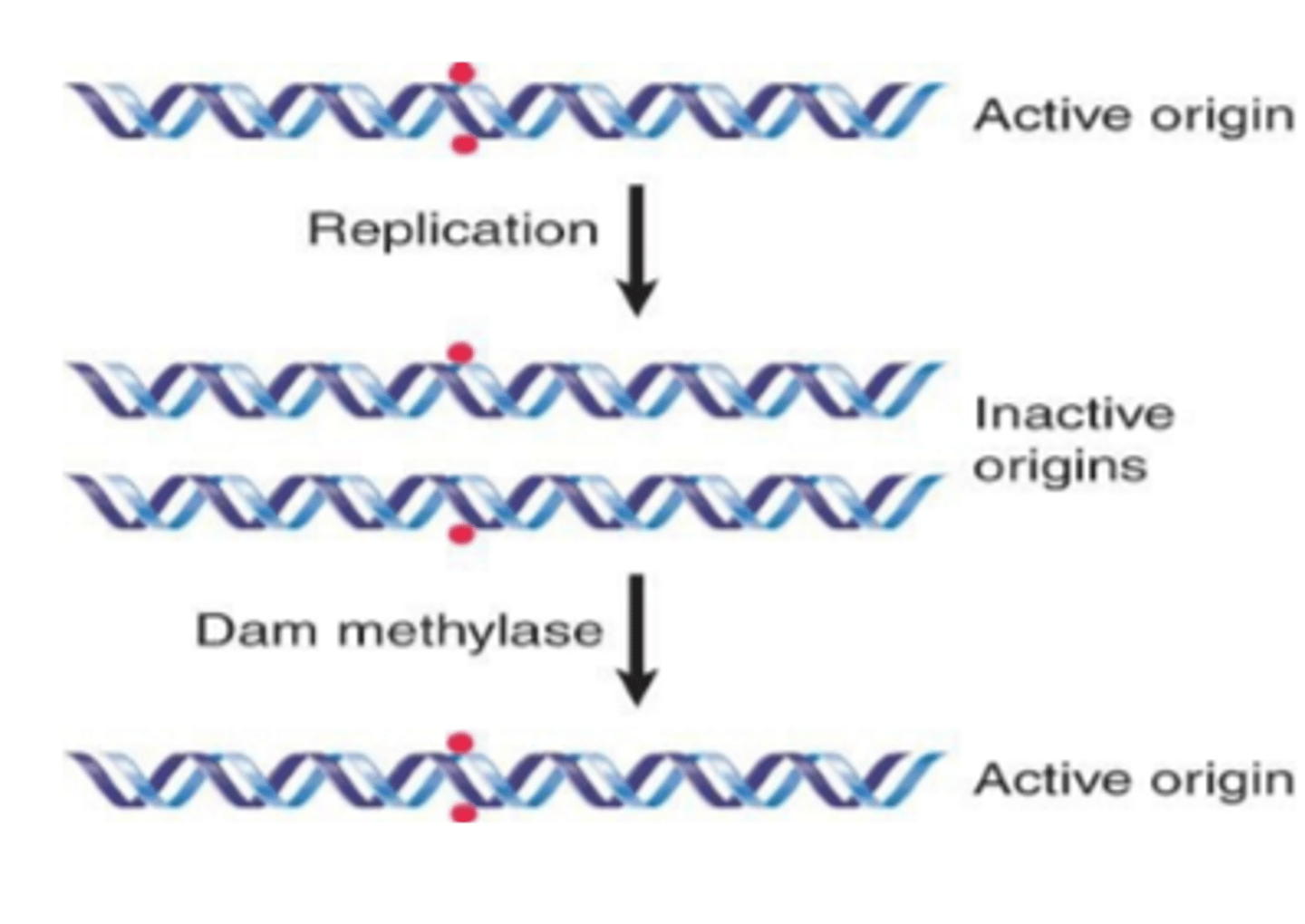
What is DnaA?
It is an initiator protein that binds to fully methylated oriC to initiate replication.
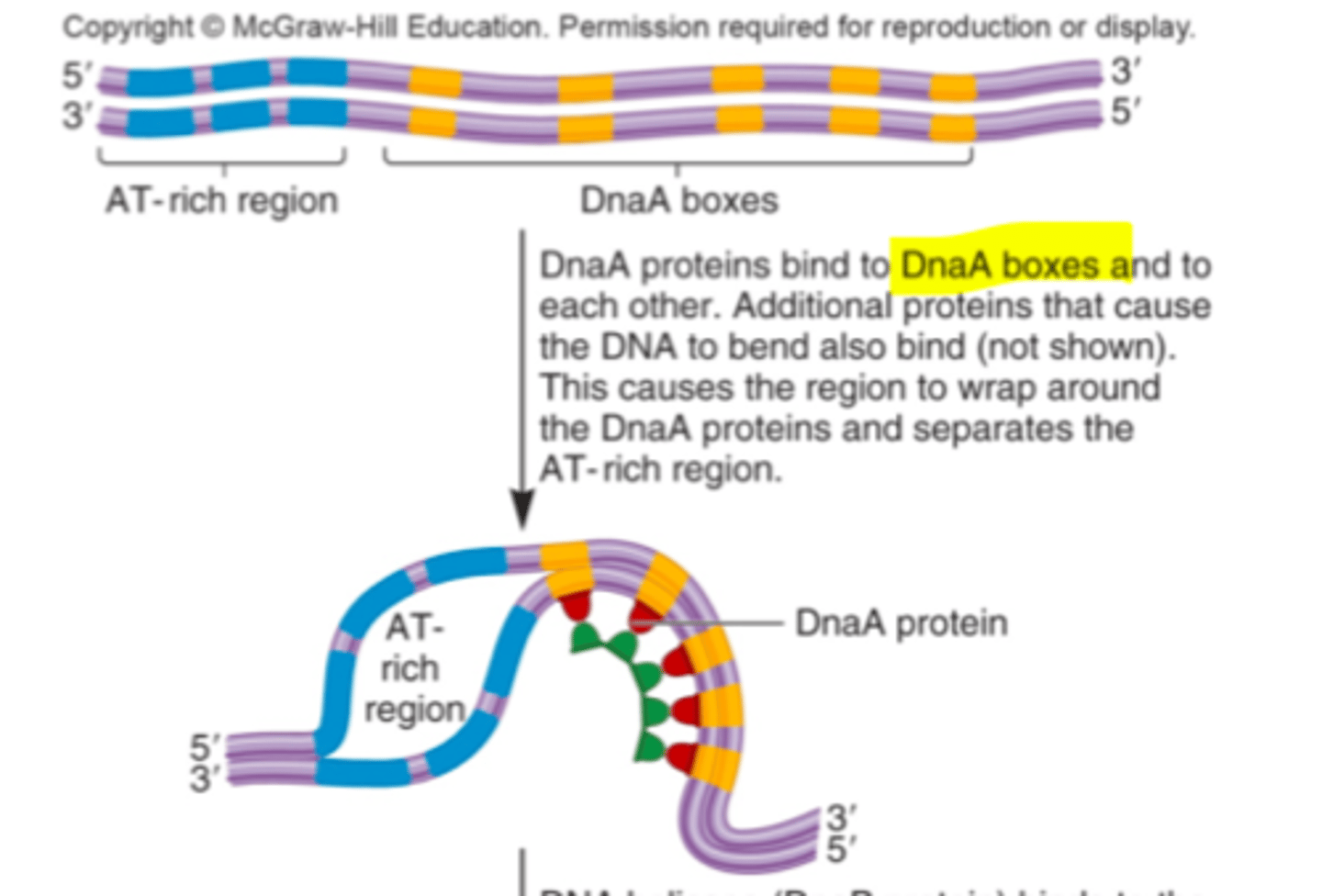
What is Conjugation?
A process in which bacteria come in contact and transfer genetic material.
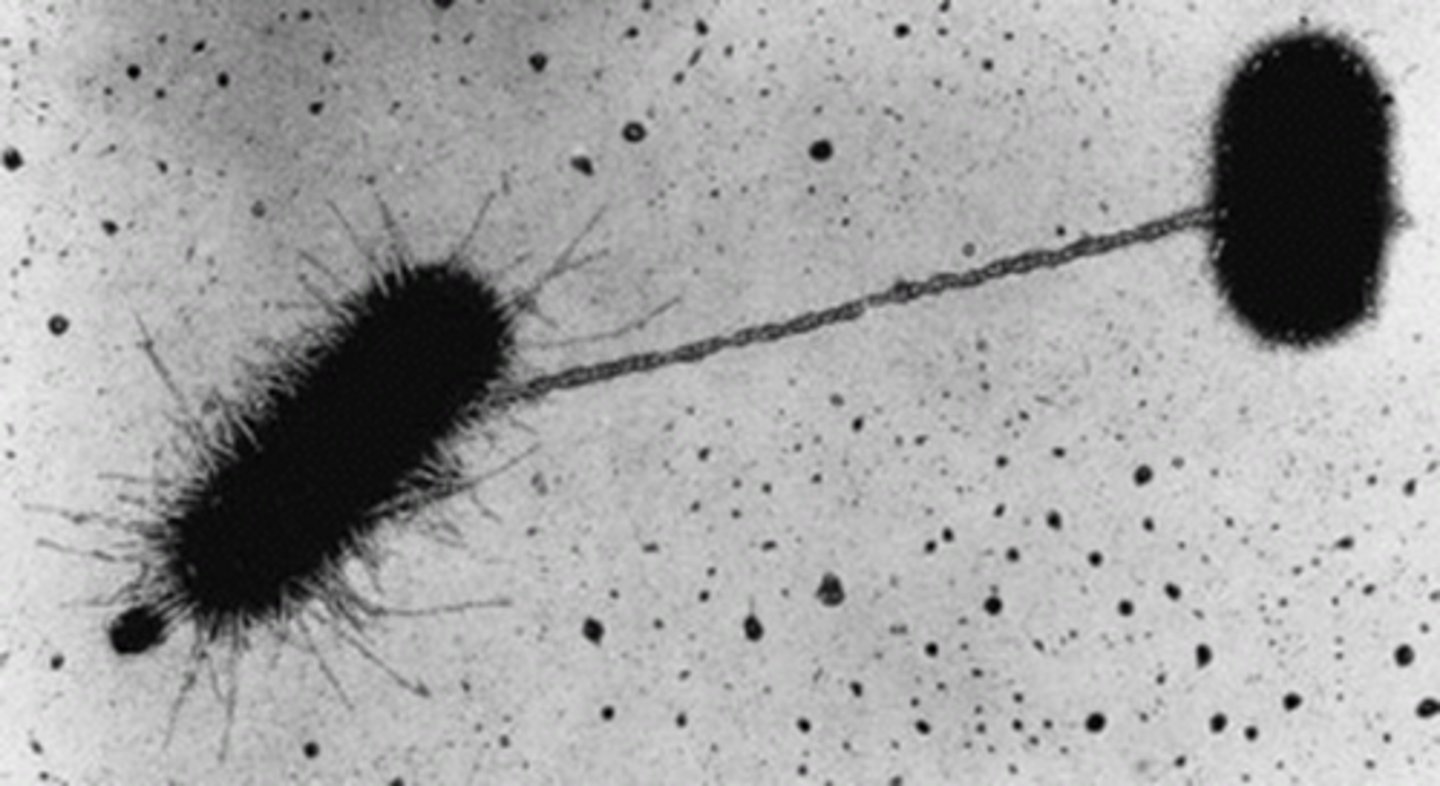
What is an F plasmid? What is required for on the plasmid for conjugation?
A replicon that is transferred by conjugation between bacterial cells. A transfer region is required on the F plasmid.
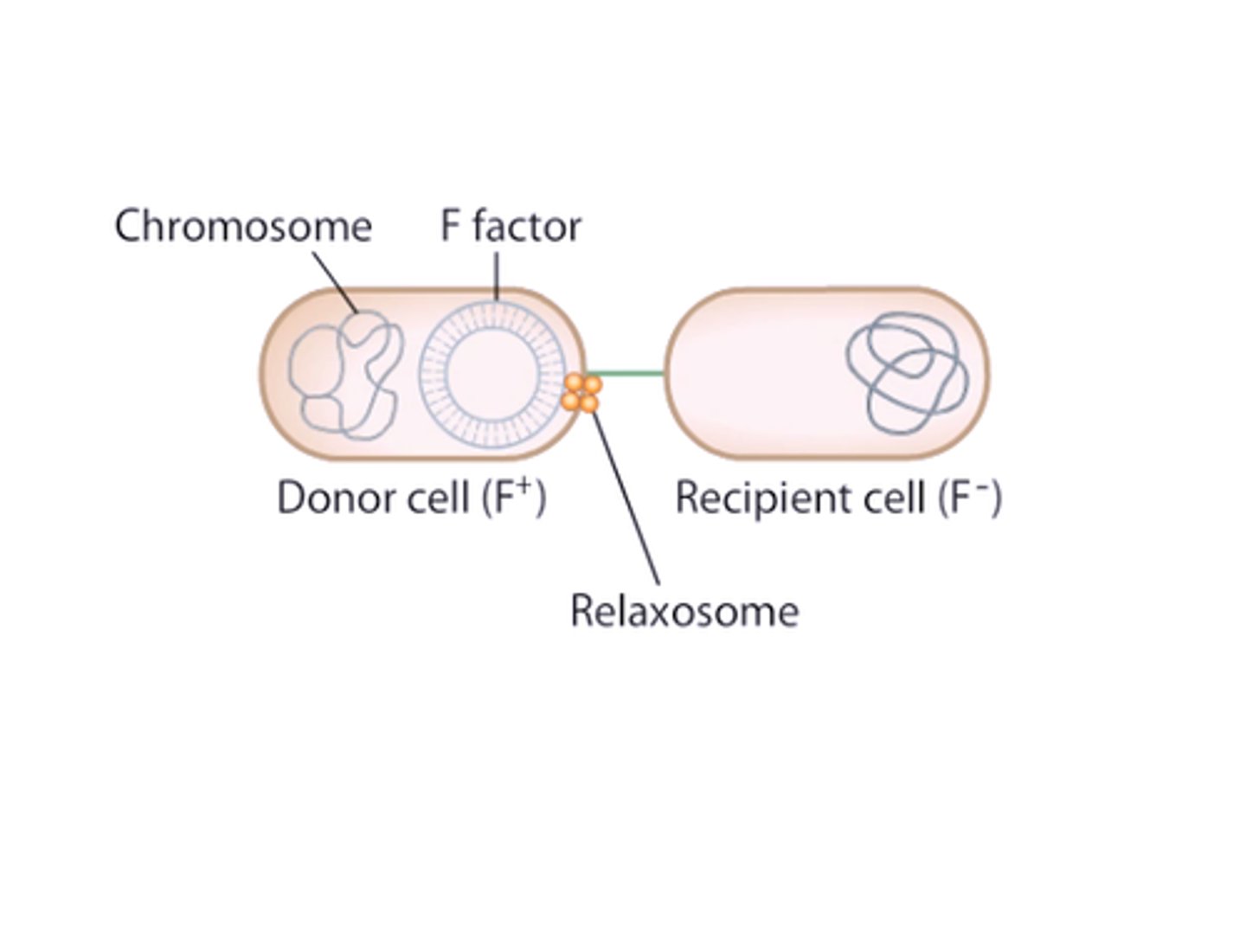
What is an Episome?
A type of plasmid that is incorporated into the host genome.

How long is the F plasmid and its transfer region?
The F plasmid is about 100 kb long and the transfer region is 33 kb long

What is TraA?
Pilin, a structural gene needed to make the pili, a hair-like projections on the surface of the cell.

What is needed for modification and assembly of the pili in bacteria?
12 other tra genes are needed
What is traS and traT?
These are surface exclusion proteins which prevents F+ cells from mating with another F+ cell
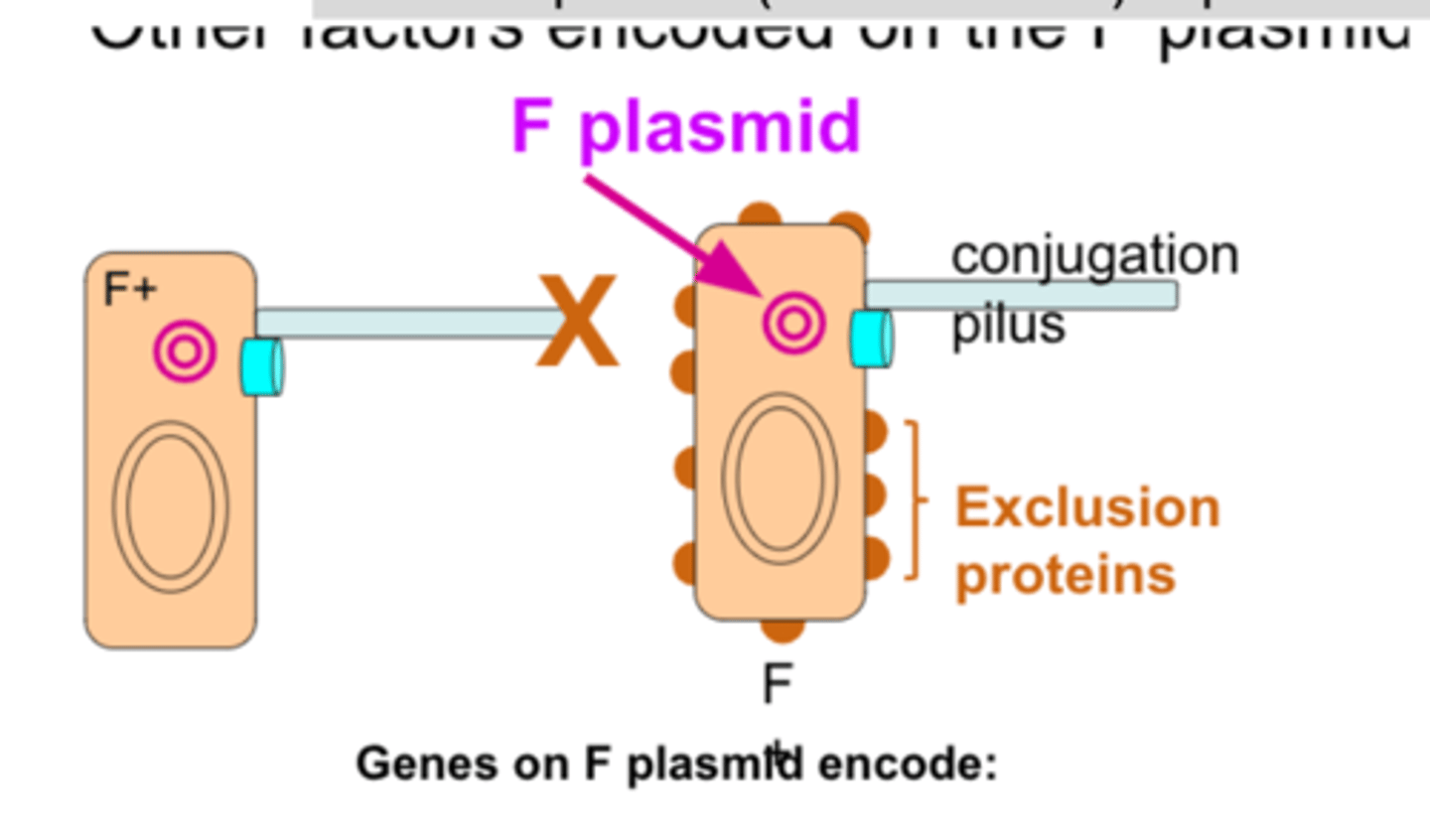
What initiates conjugation?
Pili initiates conjugation; a transfer tube is then formed between the two cells.
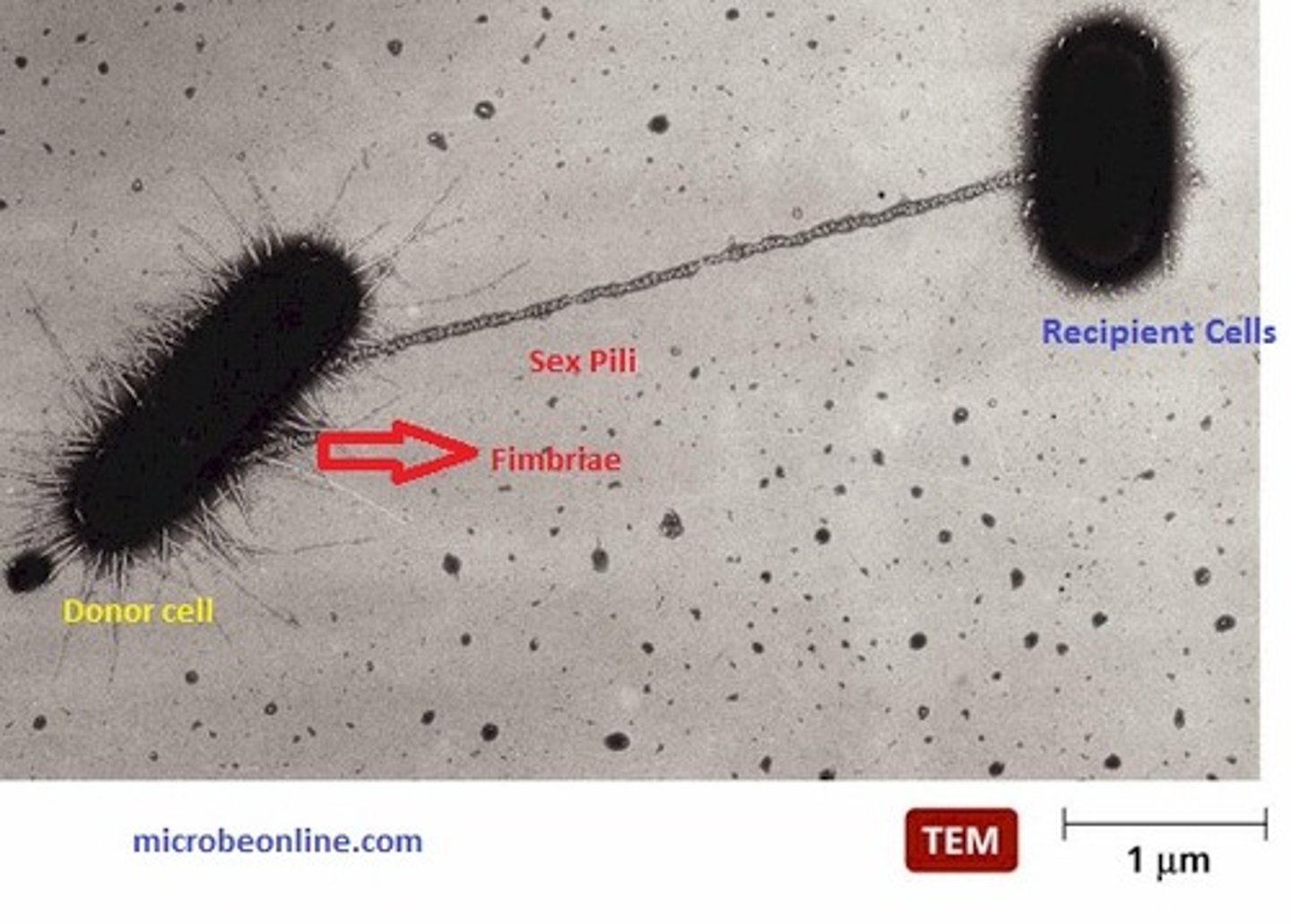
What is the difference between Free Plasmid and an Episome?
Free plasmids uses their own ori of replication and control system for replication and has 1 copy per cell. Episomes have their F-System replication suppressed and is replicated as part of the host chromosome.
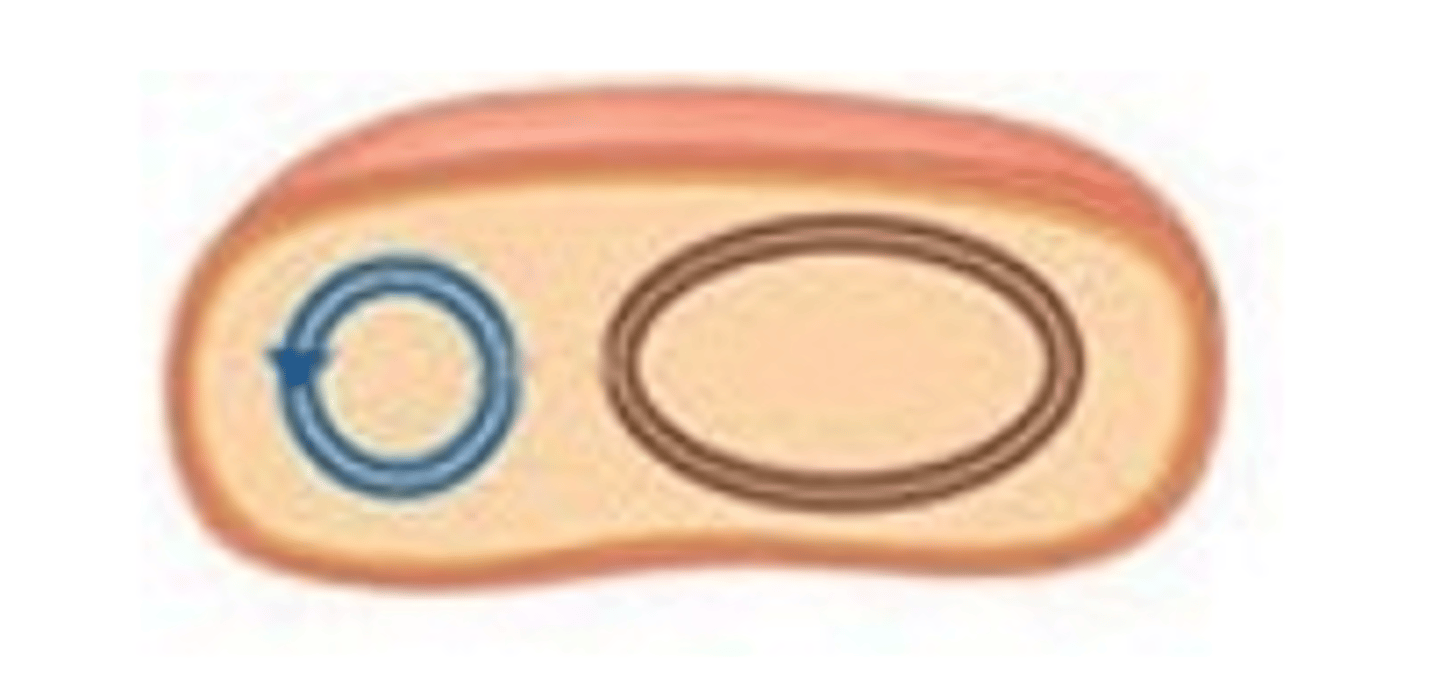
What is a bacterium that has integrated F plasmid within its own genome?
Hfr bacterium

What is unique about the transfer of Hfr?
Conjugation stops before the recipient becomes an F+ cell, not all of the Hfr is transferred completely.
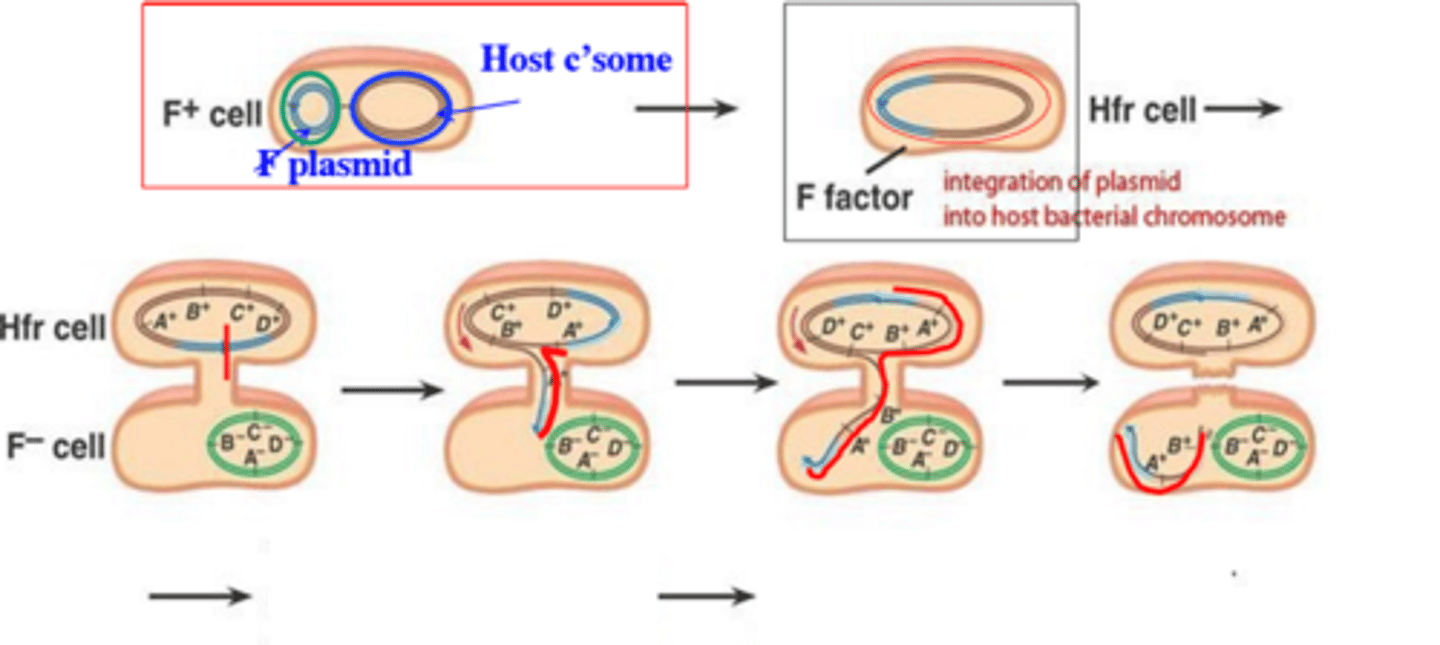
What is Crown Gall disease?
A disease that causes tumor formation within plants, caused by Agrobacterium tumefaciens

What is transferred to cause Agrobacterium tumefaciens?
T-DNA or Ti plasmid is transferred to cause Crown Gall disease.
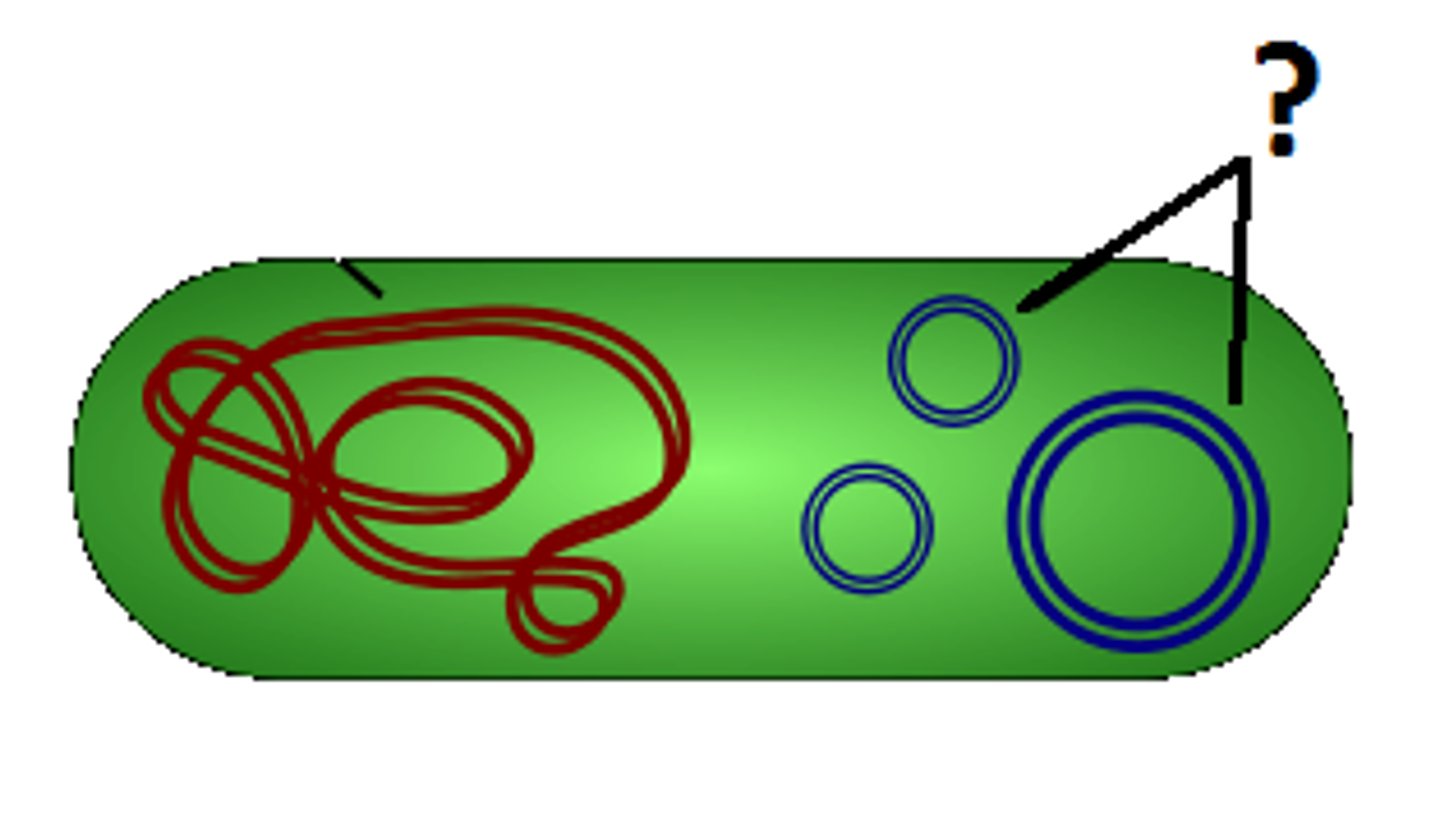
What are the properties of T-DNA?
It has genes needed for bacterial and plant activities, its genes generate tumors, and it has genes for the synthesis and utilization of opines.

What are opines?
small molecules used by agrobacterium for growth

What are the genes needed to be present in bacteria to transfer T-DNA?
1. chvA, chvB, and pscA initiate binding of bacteria to plant cell
2. Vir region on the Ti plasmid release and initiate transfer of T-DNA
3. T-DNA is needed to transform the plant
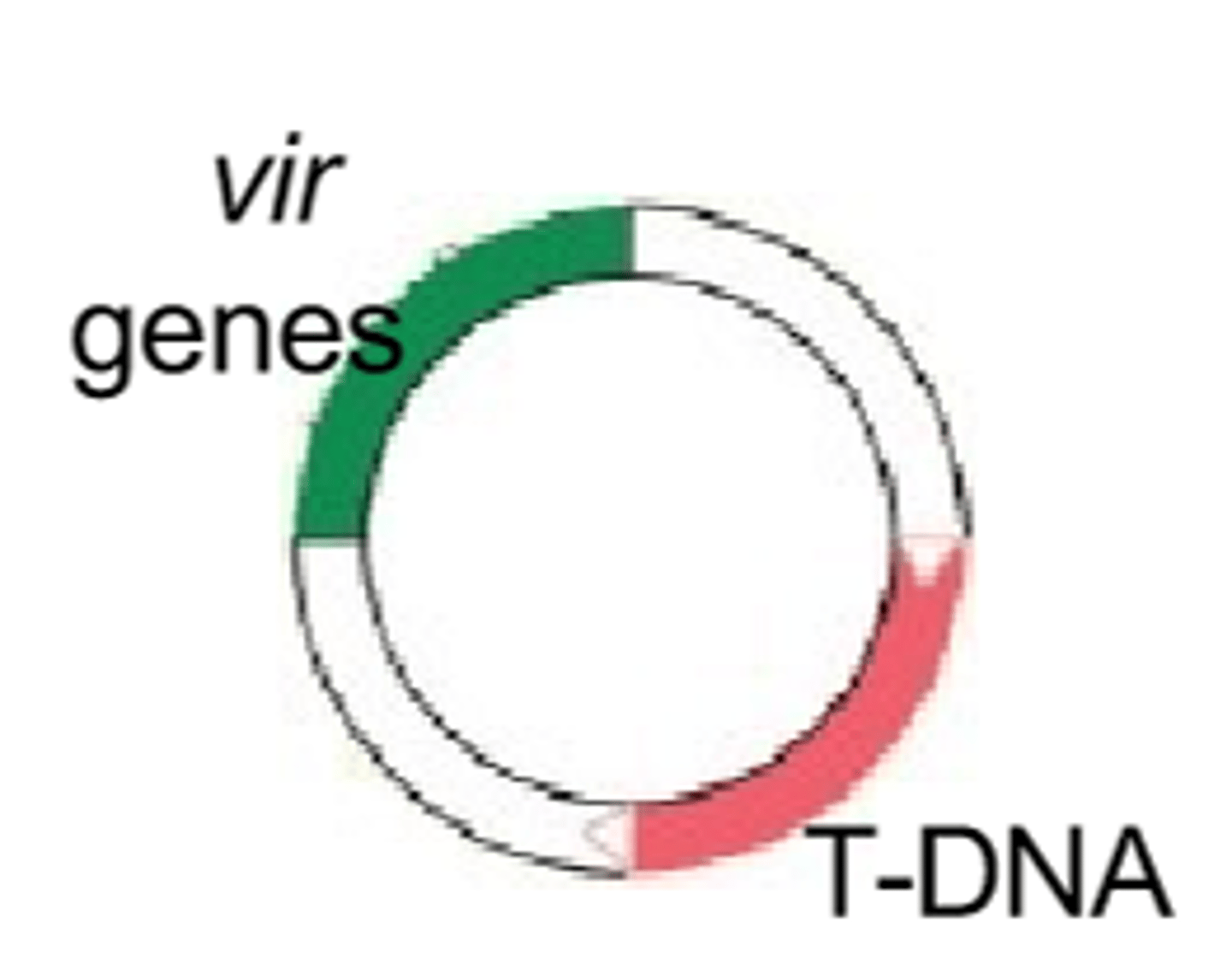
What is produced when plant cells are wounded?
Acetosyringinone is produced, this is responsible for autophosphorylation of VirA
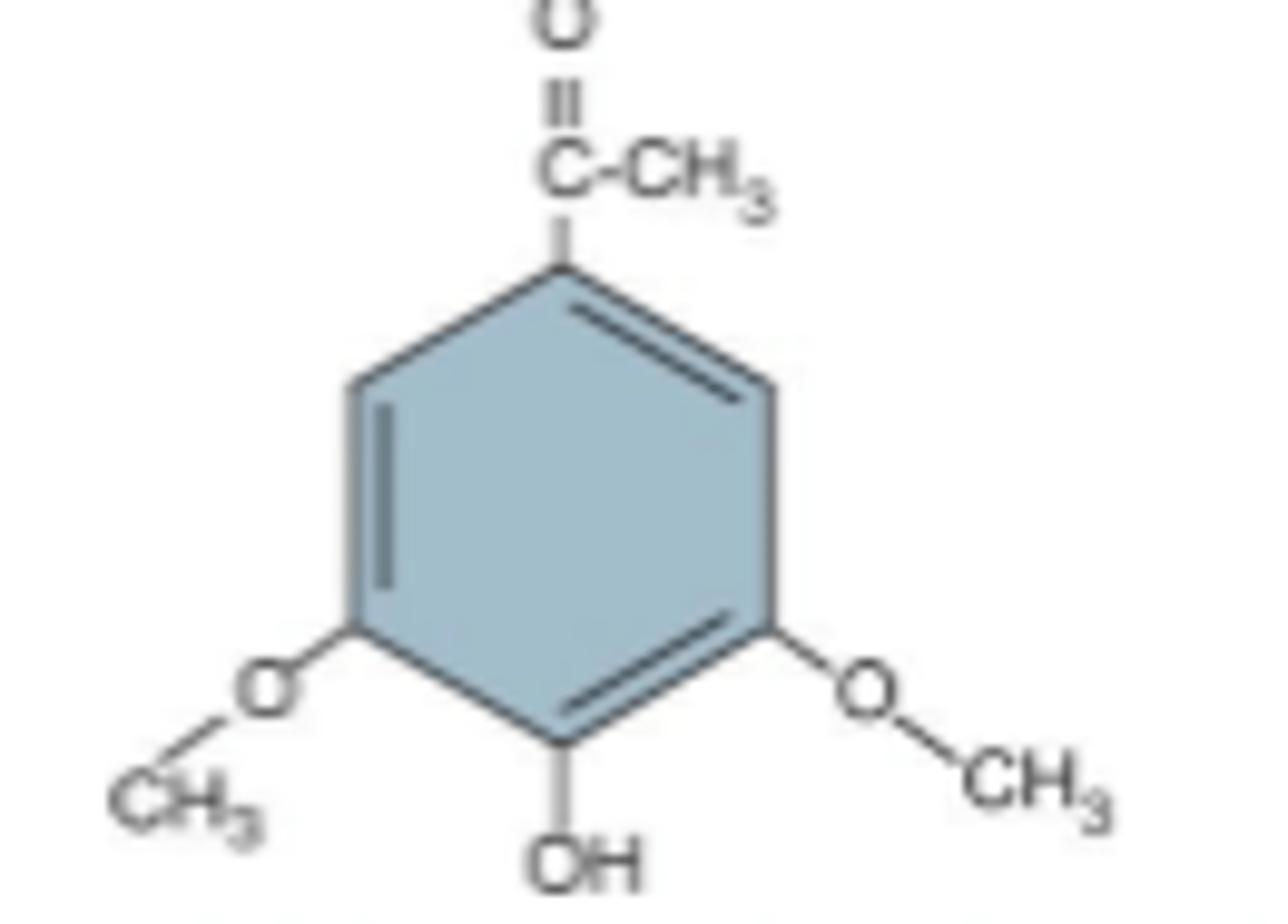
What are the stages of transfer of T-DNA?
1. virA and virG genes are activated, Acetosyringinone phosphorylates virA which then phosphorylates virG
2. Phosphorylated virG binds to virB,C,D,E promoters and activates them
3. virB,C,D,E respond
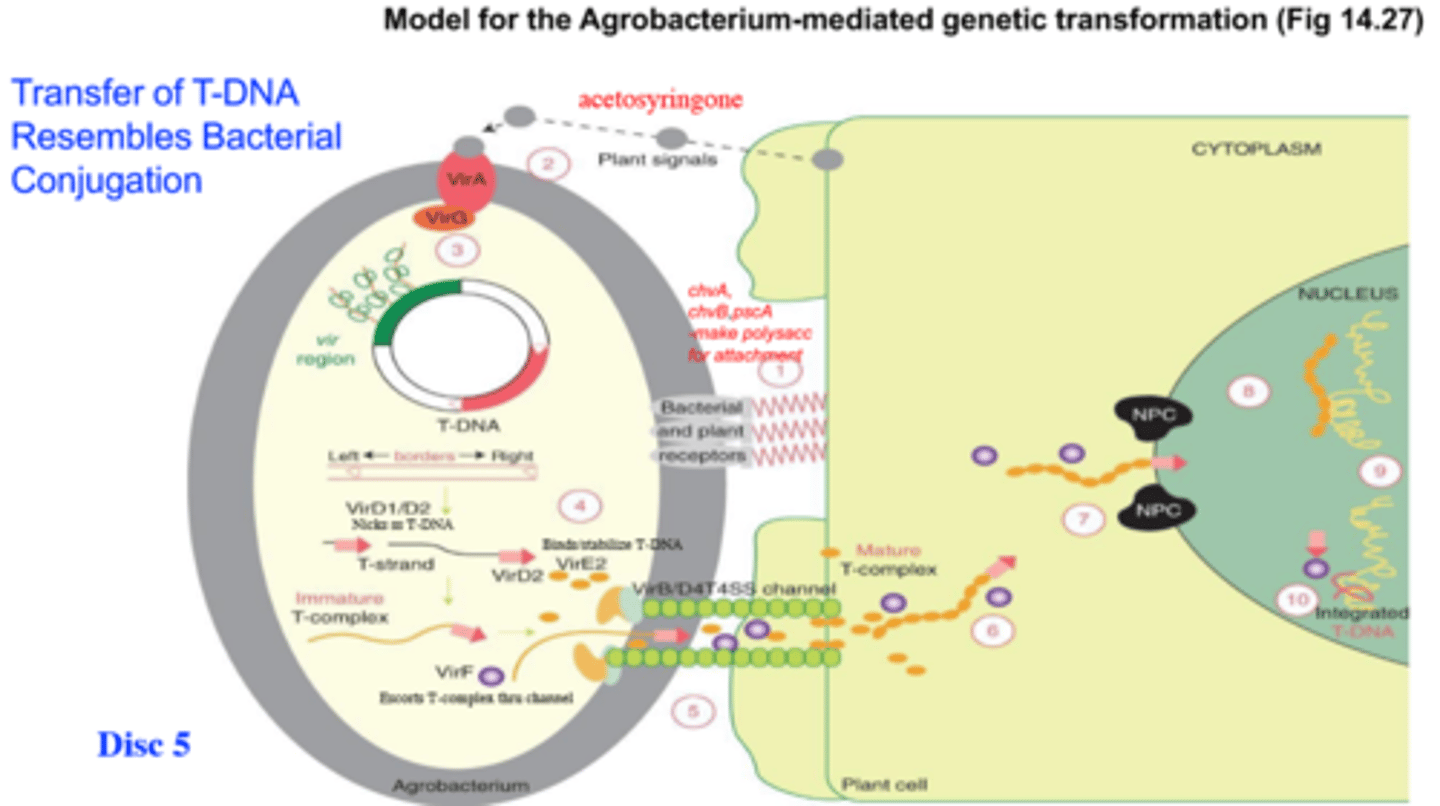
What are HT plants?
These are Herbicide Tolerant plants which are able to resist Glyphosate which is a key ingredient in herbicide.
What are transgenic seeds?
These are seeds that will sprout HT Plants which can grow in fields treated with roundup
What are BT crops?
These are crops that are able to create their own pesticides, Bacillus thuringiensis, they are able to eliminate caterpillars such as the European Corn Borer
What is an example of a BT Crop discussed?
The New Leaf Superior Potato is a transgenic BT variety of the "Russet Burbank" which is effective against the Colorado potato beetle pest
What is Pharming?
GMO Plants and Animals that are able to create substances used as pharmaceuticals.
What is an example of Pharming discussed?
Glucocerebrosidase, commonly known as Etelyso is used to treat Gauchers disease, it was the first plant made drug produced in carrots.